
Our Climate Action Plan
During the 2021 UN Climate Change Conference (COP26) in Glasgow, 50 Degrees North Nordic, along with 300 other tourism companies, became one of the founding signatories of the Glasgow Declaration. Here is our plan forward. You can follow our progress by reading our annual Impact Reports linked at the bottom.
During the 2021 UN Climate Change Conference (COP26) in Glasgow, 50 Degrees North Nordic, along with 300 other tourism companies, became one of the founding signatories of the Glasgow Declaration. Formed collaboratively between the UNWTO, UNEP, VisitScotland, Tourism Declares and Travel Foundation, it unites our sector in a shared commitment to limit global warming to 1.5 degrees above pre-industrial levels and commits its signatories to reducing greenhouse gas emissions by 50% by 2030 and achieving a net-zero sector by or at the latest by 2050.
Understanding Sustainability terms in tourism can be complicated, so that is why we’ve created a simple 5-step Climate Action Plan to communicate what we are doing to address our own greenhouse gas emissions.

Step 1: Measure
In order to begin reducing our emissions, the first step is to measure them.
To do so, we partnered with E-collective, a dedicated carbon consultancy who use GHG protocol (the global standard framework for measuring and managing greenhouse gas emissions (GHG)) to measure the entire carbon footprint of our company, from the emissions we generate from our offices, to the tours themselves. These can be summarised as our Scope 1, 2 and 3 emissions.
Scope 1: Direct emissions. These are emissions from any sources that 50 Degrees North either own or have direct control over i.e. from air conditioning units, or any company vehicles that we own.
Scope 2: Indirect emissions from any purchased or acquired energy for our offices.
Scope 3: Indirect emissions from sources that are not owned or controlled by 50 Degrees North. This refers to all of the emissions from our activities, such as our business travel and the tours that we sell, including accommodations, activities, all transportation and meals.
We decided to focus on 2019 as our ‘base’ year, the first year in which we will measure our emissions. Due to the Covid Pandemic in 2020 and 2021, these were not typical years for our company, so it made sense to look at the closest pre-pandemic year in which to start measurements.
The Results
Our emission breakdown:
At 50 Degrees North, we have been working hard to reduce the emissions from our own offices, with thorough policies advising our staff on how to be more efficient with energy and waste. As a result, our own Scope 1 & 2 emissions are low and make up a very small part of the overall picture, with most of our emissions coming from the tours that we run. As such, although there are additional small actions we can take to further reduce the footprint of our offices, our action plan is focused primarily on reducing the footprint of the tours themselves – as this will have the greatest impact.
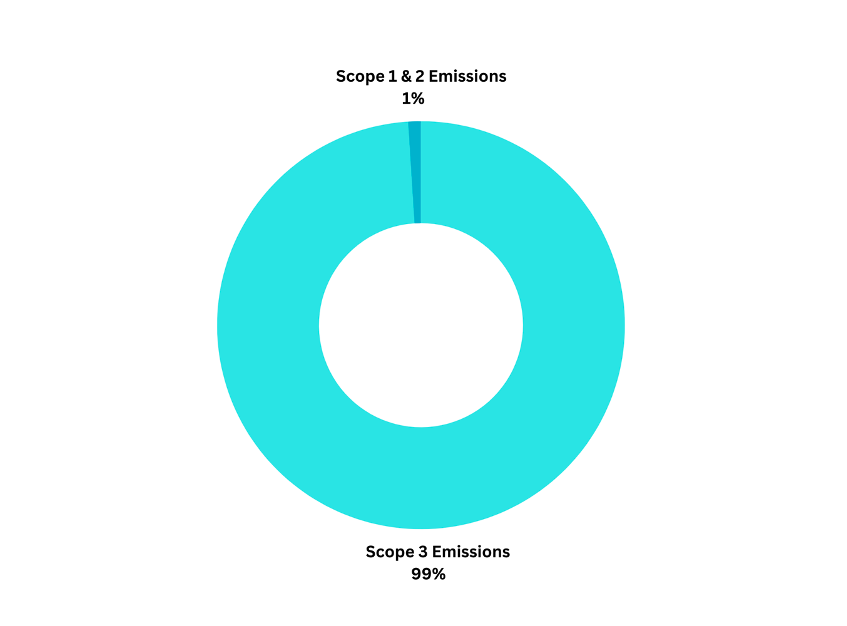
Carbon Footprint per Customer:
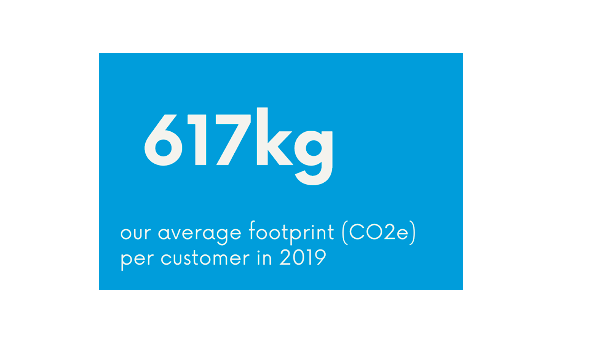
What does this mean?!

How does that breakdown per customer?
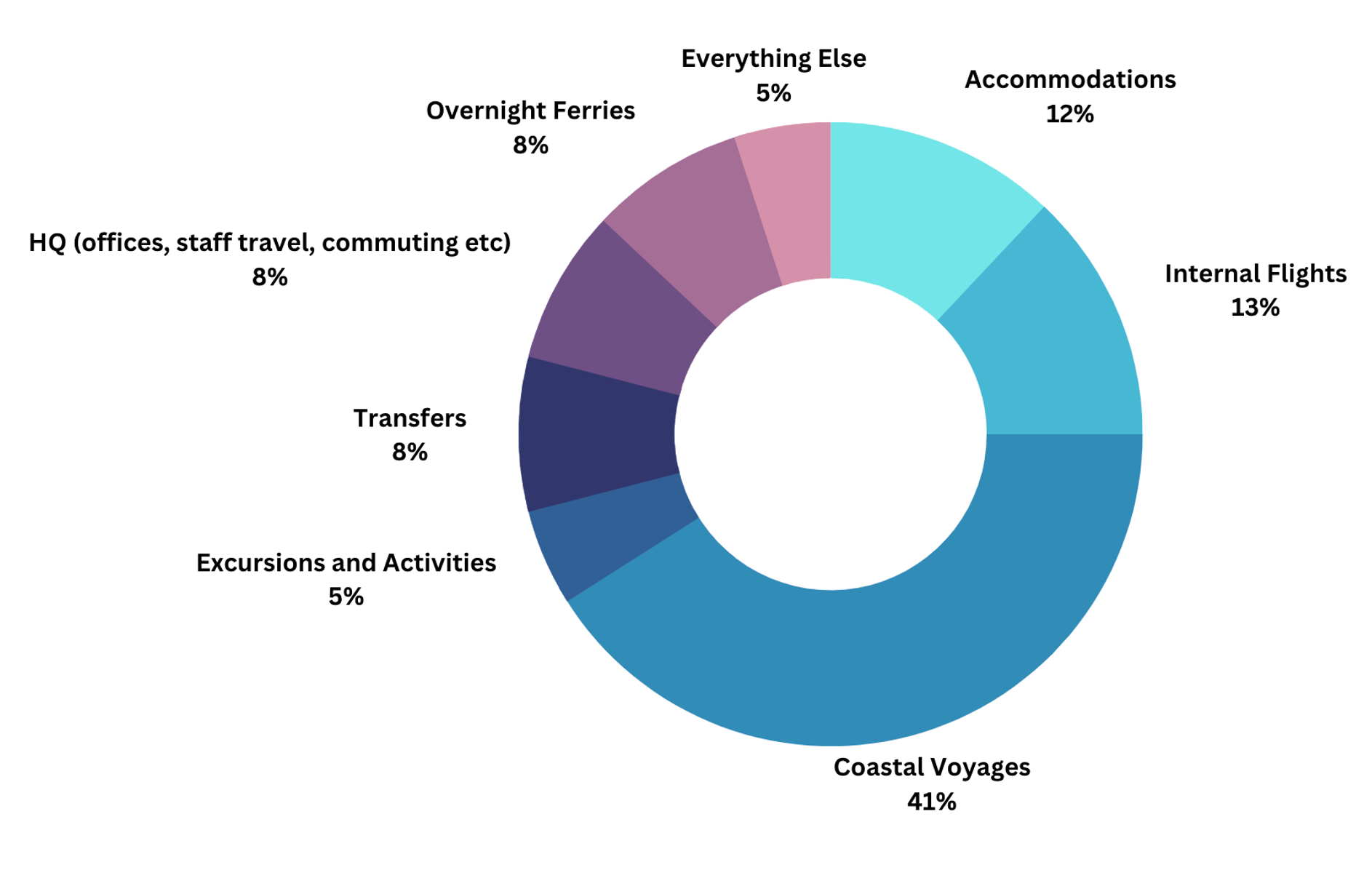
What have we measured?
The carbon footprint per customer consists of the elements that we include on our itineraries, such as accommodation, transfers, activities and excursions, any internal flights and any meals as listed on the itinerary. We have also added the associated footprint of what is involved in putting the tour together; the emissions from our HQ (office, staff travel etc). We have not included elements not included on the itinerary and therefore out of our control, such as meals or activities not included.
As we do not include flights to/from the destinations, we have not included the emissions from these in our calculations. However, we are very conscious of the impact of these, with flights typically being the largest carbon emitting aspect of a holiday. A return flight from Melbourne to Oslo is a staggering 2400kg CO2 per person, or to put that into perspective, it would make up 75% of the total carbon footprint of the trip. As a result, we have decided to build into our Climate Action plan ways in which we can support our customers in making the most sustainable choices in regards to booking flights, in order to mitigate that impact.
See our updated figures in our 2023 IMPACT REPORT.
Step 2: Reduce
Running sustainable and environmentally friendly tours has been one of the founding principles of 50 Degrees North since our company began in 2010. As such we already have many measures in place to ensure low emissions on our tours. This includes:
-
Our Norway and Australian offices are run largely on renewable energy (our US office is located in a shared co-working space, which has been given Energy Star rating for its efficient energy use, but is not currently run on renewable energy).
-
*Green Office Policy. Since 2019, we have had detailed policies for staff on how to lower the carbon footprint of our offices.
-
Prioritising working with suppliers who have environmental certificates and sustainable policies in place.
-
We encourage our customers to take longer journeys with an emphasis on slow travel and spending longer in each destination. Not only does this allow the customer to immerse themselves more in the experience, but taking fewer, but longer, holidays as opposed to multiple short trips reduces the overall carbon footprint
-
We have a range of low carbon tours, with a dedicated sections of the website focused on trekking & cycling, train and slow travel tours.
However, we recognise that more needs to be done. In order to reduce our own emissions by 50% by 2030, our own Climate Action Plan looks to reduce our own emissions by, on average, 7% year-on-year from 2022, to reach our target by 2030.
See our progress in our 2023 IMPACT REPORT.
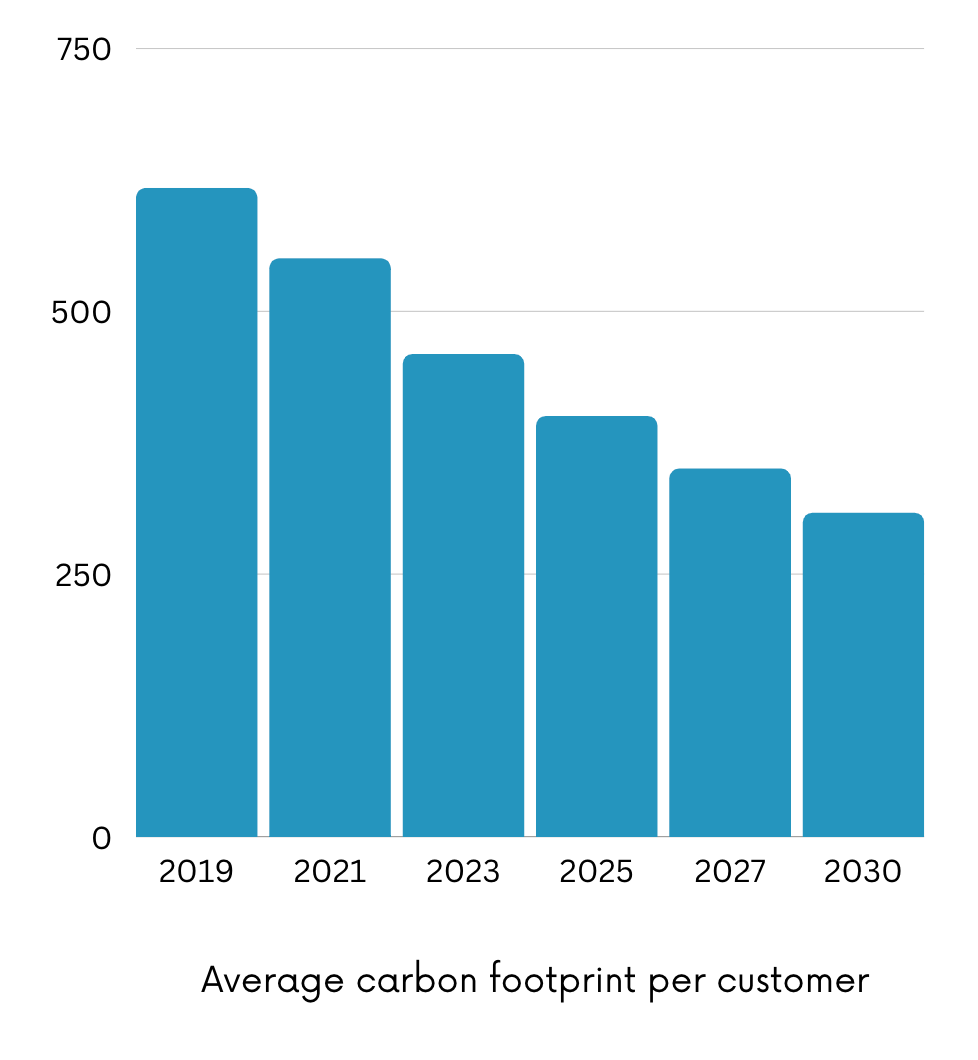
Our ongoing climate action goals:
Carbon Labelling on our top-selling tours
In 2023, we began to add carbon labels on our most popular tours to better understand the carbon footprint of each tour. This way, we can help our clients make sustainable choices. We also have ambitious goals to be able to provide this data on each of our tailor-made quotes. While our current technology does not support this, this is something that we are working on.
Increase the percentage of low carbon activities that we offer
We will continue to expand and improve on our existing range of low carbon activities we offer to our clients. In addition to this, we will improve how we communicate these options with our clients, including creating ‘labels’ on our website and quotes to make it easier for customers to pick the activities with the lowest carbon footprint.
Increase the percentage of accommodations that we work with that use renewable energy
We select our accommodations carefully, preferring to work with those that support local communities and have environmental certificates in place. In addition to this, we will continue to assess partners to gain a greater understanding of which are powered on renewables, in order to increase this year on year. We are very fortunate that the Nordics are world leaders in renewable energy - as such, we must ensure that we continue to work with partners that utilise on this.
Reduce the number of internal flights booked
Due to the long distances involved, time constraints, and a lack of public transport infrastructure in some locations, it can be difficult to travel around the Nordics without the use of internal flights. However, flights are one of the worst offenders when it comes to carbon emissions, with a return flight from Oslo to Kirkenes being as much as 200kg CO2 per person. Conscious of this, we have only one itinerary on our website which includes an internal flight. However, for our tailor-made tours, we will continue to educate our team on how to create itineraries that reduce the need for these.
Increase the percentage of electric vehicles we use for touring or transfers
We will continue to investigate and implement options for electric vehicle use on our tours, to create itineraries that include charging facilities in accommodations and routes.
Offer our clients the most carbon efficient options for cruise and ferry
The Norwegian Coastal Voyage has often been described as “the world’s most beautiful voyage”, and it is an iconic and important part of many of our clients visit to our region - and a vital source of income to many isolated settlements along the Norwegian coastline. Hence, it is important that we continue to support these voyages, even though we are aware that they make up a large part of our overall carbon footprint. We will continue to keep abreast of the industry’s efforts to de-carbonise, to ensure that we are offering our clients the most sustainable and fuel-efficient options.
Flights
Whilst we do not book flights to the destination and this element of our trips is therefore out of our control, we are conscious of the large volumes of emissions that these generate. Therefore, we are keen to support our customers in making the most sustainable choices by:
-
Giving guidance to our clients on how, and where, they can book the most fuel-efficient airlines which have the lowest carbon footprint
-
Advising our clients on how they can offset their flights with gold-certified carbon offsetting schemes
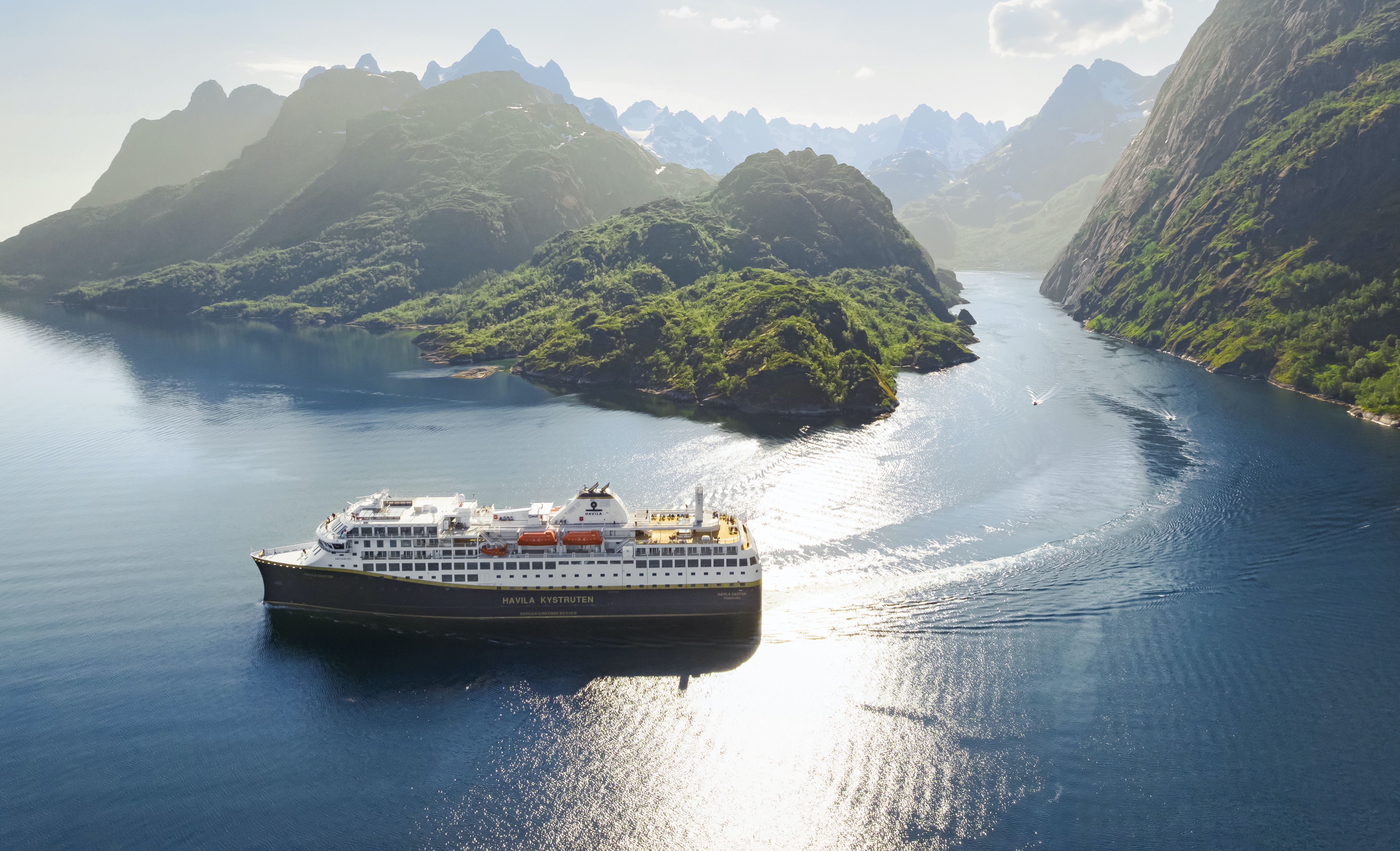
Step 3: Offset
A carbon offset is the removal or reduction of emissions of carbon dioxide made in order to compensate for emissions made elsewhere. We believe that an avoided emission is better than an offset emission, which is why our Climate Action Plan is focused primarily on ambitious reduction goals. While offsetting is not the solution in itself, it should still be seen as a positive action that can be taken with any remaining emissions that are generated.
We are partnered with the Norwegian offsetting company Chooose, selecting gold-standard certified carbon credits which support renewable energy projects worldwide.
Step 4: Collaborate
Making real and positive change will take a combined effort across the tourism industry. As such, we call upon our industry partners to commit to reducing their carbon footprint, and join us in signing up to the Glasgow Declaration or committing to science based targets.
We are committed to offering transparency in our approach, sharing best-practices, challenges and solutions, and welcome feedback and an open-dialogue with suppliers and industry-piers.
You can view how we calculated our emissions through our detailed methodology here.
Please contact nordic@fiftydegreesnorth.com with any questions.
Step 5: Evolve
Our Climate Action Plan is a working document, which we will continue to adapt and improve on as progress is made. Each year we aim to be better and we do not have all the answers now.
The industry is evolving and advancements in technology, and how measurements are taken, are regularly announced which will steer and influence our own policies. We commit to deepening our understanding of these advancements, to ensure that we are using this information to make more informed decisions as to how best we can meet our targets.
You can follow our progress by reading our 2023 IMPACT REPORT.
You can also read our sustainability page for further details on our initiatives.
